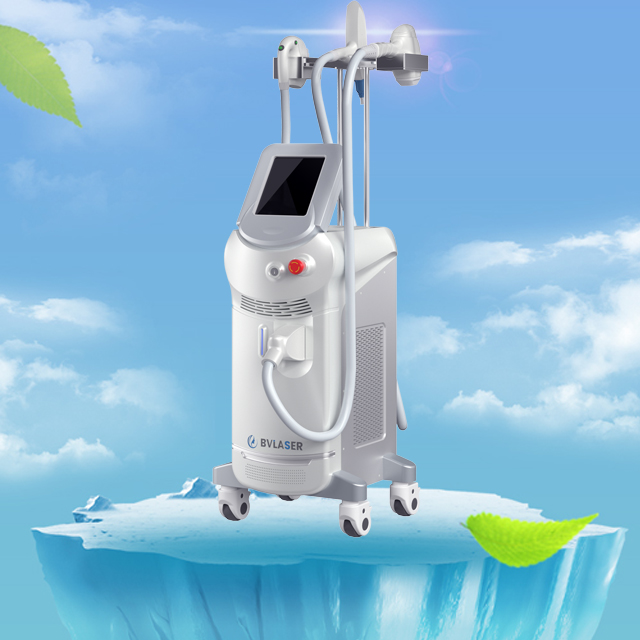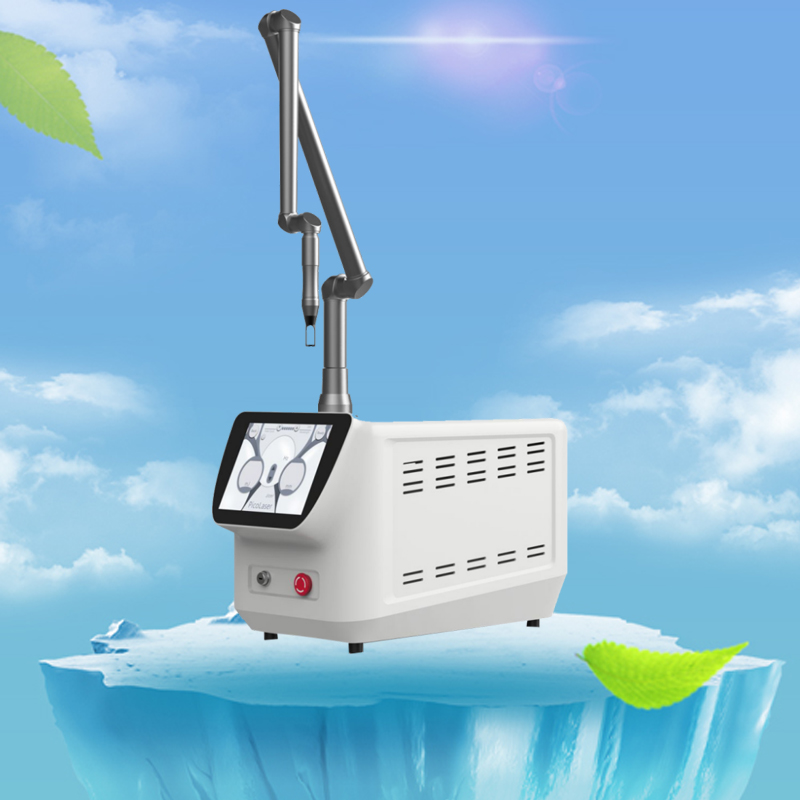The Magic of Thulium Laser: A Game Changer for Sun Damage
Author:baishilf Time:2024-12-09 14:00:17
Ah, summer! It’s that time of the year when the days are long, the sun is shining bright, and everyone loves to spend time outside, soaking up those warm rays. Beach days, picnics, and outdoor adventures are all part of the summer fun. But there’s a not-so-fun side to all that sun exposure: sun damage. You know, those pesky dark spots and wrinkles that pop up after spending too much time under the sun? Don’t worry, there’s a superhero in town – the thulium laser machine! But before discussing that, let’s dive into what sun damage is.

What is Sun Damage?
Imagine your skin is like a piece of paper. Now, if you leave that paper in the sun for a long time, it gets discolored, maybe even crumbly. That’s sort of what happens to our skin. Sun damage refers to the harm caused by the sun’s harmful rays, leading to wrinkles, dark spots, and sometimes even more severe skin conditions. It’s like when your favorite toy fades if you leave it in the sunlight for too long. No fun, right?
Ways to Prevent Sun Damage
Fortunately, we can protect ourselves and prevent sun damage in several ways. Here are some tips to keep in mind for safe and healthy fun in the sun.
*Sunscreen
Think of it as a protective blanket for your skin. Always wear it when you’re out and about. Make sure to choose a sunscreen with a high SPF and to reapply it often, especially if you’re spending a lot of time outdoors. With the right sunscreen, you can enjoy the sun without worrying about damaging your skin.
*Hats and Protective Clothing
In addition to sunscreen, wearing protective clothing like hats and long-sleeved shirts can also help shield your skin from the harmful effects of the sun. These items are umbrellas for your skin, blocking direct sun rays and reducing your risk of sunburn and skin damage. When choosing a hat, look for one with a wide brim that covers your face and neck, and opt for lightweight, breathable fabrics like cotton or linen for your clothing. Taking these extra precautions can further protect your skin and allow you to enjoy the outdoors safely.
*Avoid Mid-day Sun
It’s important to remember that the sun’s rays are strongest during the mid-day hours, typically between 10 a.m. and 4 p.m. It’s best to stay in the shade or indoors during this time. Avoiding direct sunlight during these peak hours can further reduce your risk of sunburn and skin damage. Remember always to take precautions to keep your skin safe and healthy, especially when spending time outdoors.
But there’s a new player in the game of sun protection: Thulium Laser. This isn’t just about prevention, it can help fix some of the sun damage you already got!
Let’s take a journey to the world of advanced skincare. The Thulium fiber laser is like a magic wand that dermatologists (skin doctors) use. It sends out super-focused light beams to target and treat the damaged parts of the skin. So, it’s kind of like using a special eraser to remove the “mistakes” caused by the sun.
In the dynamic landscape of dermatology and aesthetic treatments, various lasers are being employed to address a myriad of skin concerns. 1927nm thulium laser, a relatively newer addition to this repertoire, is steadily gaining prominence due to its versatility and efficacy. In this piece, we’ll delve into the Thulium laser, understanding its mechanism, applications, benefits, and key considerations. Thulium laser, operating at a 1927nm wavelength, falls under the category of fractional lasers. This wavelength allows it to precisely target the upper dermis, making it particularly effective for treating surface-level skin issues and pigmentation.
What Makes Thulium Laser Special?
*Wavelength: Without getting too sciencey, let’s say lasers work at different “levels” or wavelengths. The Thulium laser operates at a specific wavelength (around 1927nm) which is super effective in targeting the top layers of the skin. It’s like having a fine-tuned instrument that works precisely where we want it to.
*Precision: Thulium laser is like the artist of the laser world. It’s precise, ensuring it targets only the damaged skin without affecting the surrounding healthy skin. It’s like using an eraser to rub out just a tiny mistake in your drawing without smudging everything around it.

How Does Thulium Laser Work?
When the Thulium laser is used on the skin, it creates tiny controlled injuries (don’t worry, it’s not as scary as it sounds). These small injuries signal the skin to start a healing process. The skin responds by producing more collagen, a protein that makes our skin look plump, young, and fresh. It’s like when you work out your muscles, and they grow stronger and better, similarly, the skin becomes better after the treatment.
The 1927nm wavelength emitted by Thulium laser is absorbed predominantly by water in the skin. When this occurs, it creates controlled microthermal zones, promoting exfoliation of the superficial skin layers. This also stimulates the body’s natural healing response, encouraging the production of collagen and newer skin cells.
*Unlocking Radiance: During the treatment, the Thulium laser beam is divided into many microscopic treatment zones, employing a fractional approach. This allows the laser to target only a fraction of the skin’s surface while leaving the surrounding healthy tissue unaffected. By delivering the laser energy in fractional zones, the Thulium laser creates microscopic injuries in the skin. These controlled injuries stimulate the skin’s natural healing response and trigger collagen synthesis in the treated areas.
*Microscopic Precision: The production of new collagen fibers during the healing process helps to improve the skin’s texture, tone, and overall appearance. Over time, as the skin heals and new collagen forms, patients can expect to see gradual improvements in their skin’s texture, firmness, and overall appearance. The treated areas become smoother, fine lines and wrinkles become less pronounced, pigmentation irregularities fade, and the skin looks more rejuvenated and youthful.
*Collagen Magic: The number of treatment sessions required may vary depending on individual factors such as the severity of the skin concerns and the patient’s desired outcomes. Typically, a series of treatments spaced several weeks apart is recommended to achieve optimal results.
*Gradual Transformation: Thulium Laser Treatment utilizes Thulium laser technology to target specific skin concerns and stimulate collagen production. By creating controlled injuries in the skin, the treatment promotes the growth of new collagen fibers, resulting in improved skin texture, reduced wrinkles, and a rejuvenated appearance. It is a customizable and effective procedure for addressing various skin issues and achieving a more youthful look.
What Can Thulium Laser Treat?
*Sun Damage: Those tiny dark spots that come from sunbathing? Thulium can help erase them.
*Fine Lines and Wrinkles: Want to smoothen out some skin? Thulium laser is on the job.
*Uneven Skin Tone: Thulium laser can be a game-changer for those who want an even, smooth skin color.
*Skin Texture: If your skin feels rough or bumpy, Thulium can make it feel as smooth as ice cream (but please don’t try to eat it!).
Applications of Thulium Laser
*Pigmentation: Thulium laser is especially effective in treating superficial pigmented lesions like sunspots, age spots, and freckles.
*Fine Lines and Wrinkles: By promoting collagen production, it aids in the reduction of fine lines and wrinkles, enhancing skin’s overall texture.
*Skin Rejuvenation: Thulium laser can be used for general skin rejuvenation, improving the skin’s tone and brightness.
*Actinic Keratosis: Thulium laser has been utilized for the treatment of actinic keratosis, a precancerous skin condition.
Benefits of Thulium Laser
*Minimally Invasive: Thulium Laser Treatment is a minimally invasive procedure that does not require incisions or surgery. It reduces the risk of complications, minimizes downtime, and allows for a quicker recovery compared to more invasive procedures.
*Quick Procedure: The treatment is relatively quick, typically taking around 30 minutes to an hour, depending on the size and condition of the treated area. This makes it convenient for individuals with busy schedules.
*Fractional Approach: The fractional nature of the treatment targets only a fraction of the skin’s surface, leaving surrounding healthy tissue untouched. This approach promotes faster healing, reduces downtime, and minimizes the risk of adverse effects.
*Customizable Treatment: The intensity and depth of the Thulium laser beam can be adjusted, allowing for a customized treatment tailored to specific skin concerns and desired outcomes. This ensures personalized and optimized results.
*Long-lasting Results: Thulium Laser Treatment stimulates collagen production, providing long-lasting improvements to the skin. With proper skincare and sun protection, results can be maintained for several months to years.
*Safe and Effective: Thulium laser technology has a proven track record of safety and effectiveness in dermatology. When performed by a qualified and experienced medical professional, Thulium Laser Treatment is a reliable option for achieving skin rejuvenation and addressing various skin concerns.
Considerations
*Skin Redness: Post-treatment, there may be temporary redness and swelling, resembling a sunburn, which usually subsides within a few days.
*Not for Deep Scarring: Thulium lasers target the superficial layers of the skin, making them less effective for deep scars.
*Qualified Practitioner: Ensuring the procedure is conducted by a trained and experienced professional is paramount for safety and achieving desired results.
*Sun Protection: Post-procedure, it’s crucial to avoid direct sun exposure and diligently apply sunscreen to protect the treated area.
The Thulium laser represents a significant stride in offering solutions that are both effective and minimally invasive. For those seeking to address surface skin concerns, particularly pigmentation, thulium laser offers a promising solution. As always, potential candidates should consult with a dermatologist or aesthetic specialist to discuss the appropriateness and expected outcomes of the procedure.






















